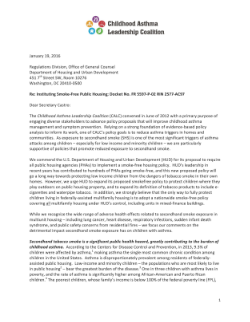Latest Asthma Research, August 29
/Teixiera, Samantha and Anita Zuberi. Neighborhood Social and Environmental Factors and Asthma Among Children Living in Low-Income Neighborhoods: The Importance of Informal Social Control. Family & Community Health. October/December 2018; 41(4): 214-224. DOI: 10.1097/FCH.0000000000000202
Mirzakhani, H, et al. Impact of Preeclampsia on the Relationship of Maternal Asthma with Offspring Asthma: An Observation from the VDAART Clinical Trial. American Journal of Respiratory Critical Care Medicine. August 28, 2018. DOI: 10.1164/rccm.201804-0770OC. [Epub ahead of print]
Martenies, Sheena E. and Stuart A. Batterman. Effectiveness of Using Enhanced Filters in Schools and Homes to Reduce Indoor Exposures to PM2.5 from Outdoor Sources and Subsequent Health Benefits for Children with Asthma. Environmental Science & Technology. Aug 24, 2018. DOI: 10.1021/acs.est.8b02053
Boek, A, et al. Ca2+ and innate immune pathways are activated and differentially expressed in childhood asthma phenotypes. Pediatric Allergy and Immunology. Aug 13 2018. DOI: 10.1111/pai.12971 [e-pub ahead of print]
Banasiak, N.C. Implementation of the Asthma Control Test in Primary Care to Improve Patient Outcomes. Journal of Pediatric Health Care. August 10, 2018. DOI: 10.1016/j.pedhc.2018.05.004. [e-pub ahead of print]
Ferraro, Valentina, et al. Exhaled biomarkers in childhood asthma: old and new approaches. Asthma Research and Practice. August 7, 2018; 4(9). DOI: 10.1186/s40733-018-0045-6
Hennessy, Aine, et al. Antenatal vitamin D exposure and childhood eczema, food allergy, asthma and allergic rhinitis at 2 and 5 years of age in the atopic disease-specific Cork BASELINE Birth Cohort Study. Allergy. Aug 7, 2018. DOI: 10.1111/all.13590 [e-pub ahead of print]
Bacharier, Leonard, et al. Longitudinal Phenotypes of Respiratory Health in a High-Risk Urban Birth Cohort. American Journal of Respiratory and Critical Care Medicine. August 4, 2018. DOI: 10.1164/rccm.201801-0190OC. [e-pub ahead of print].















